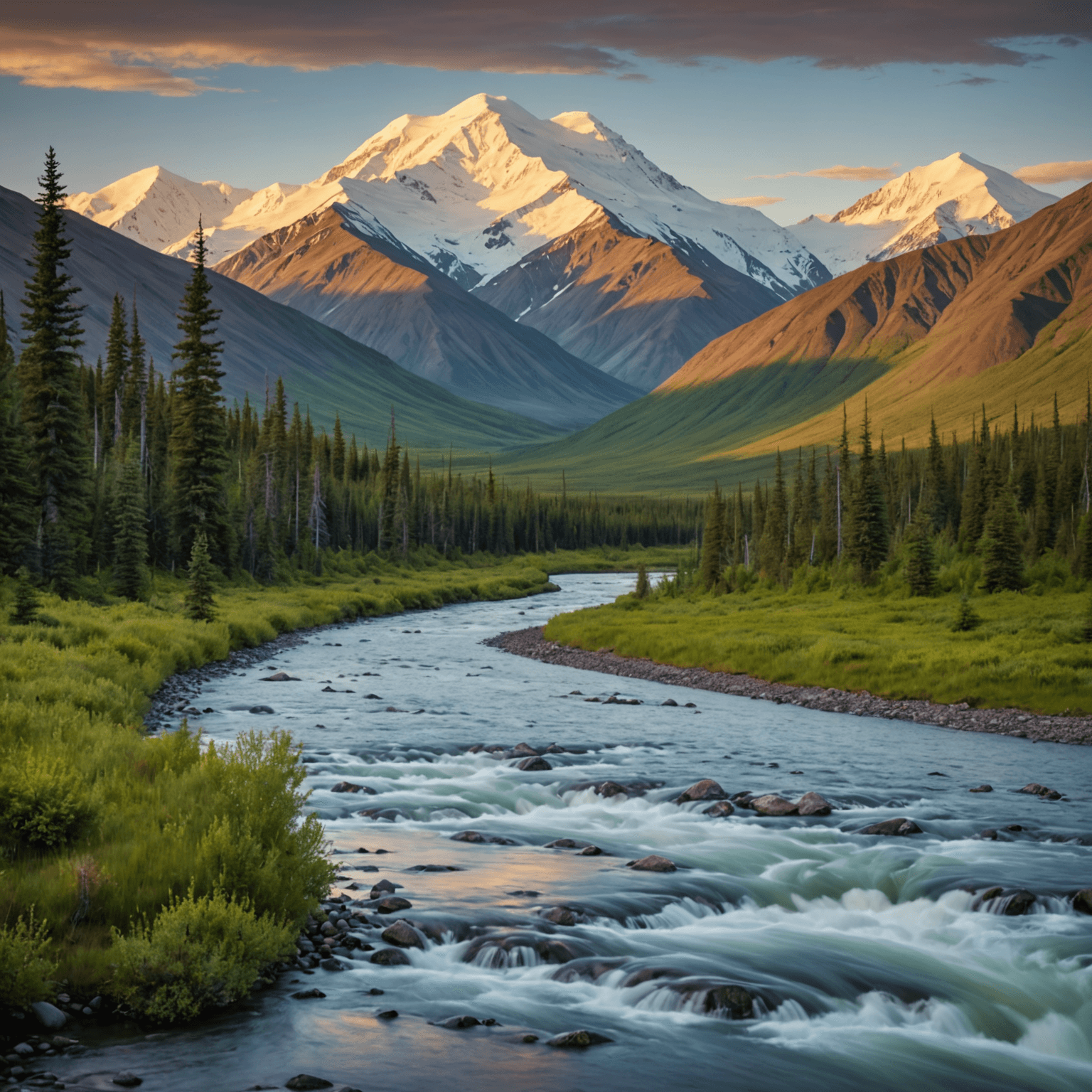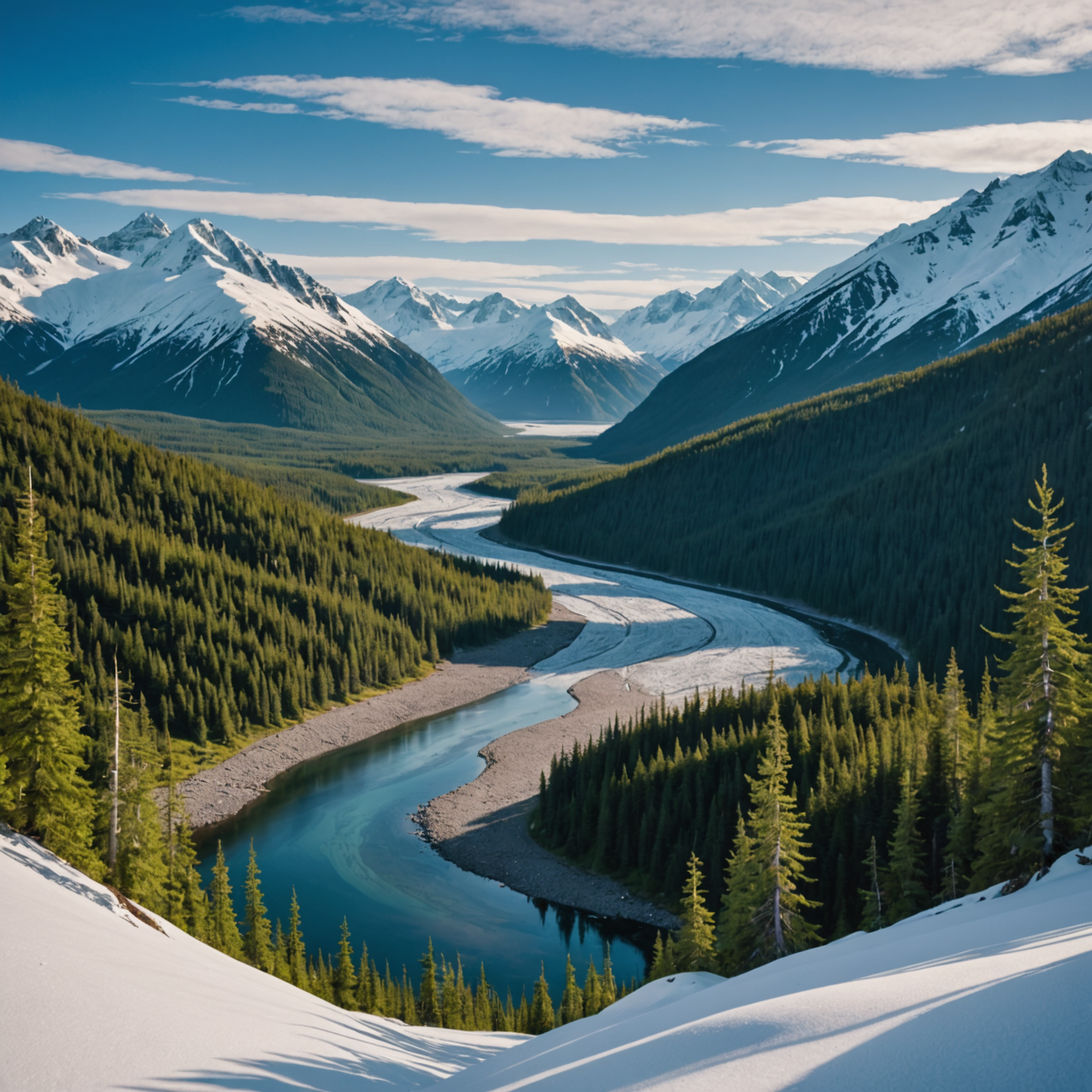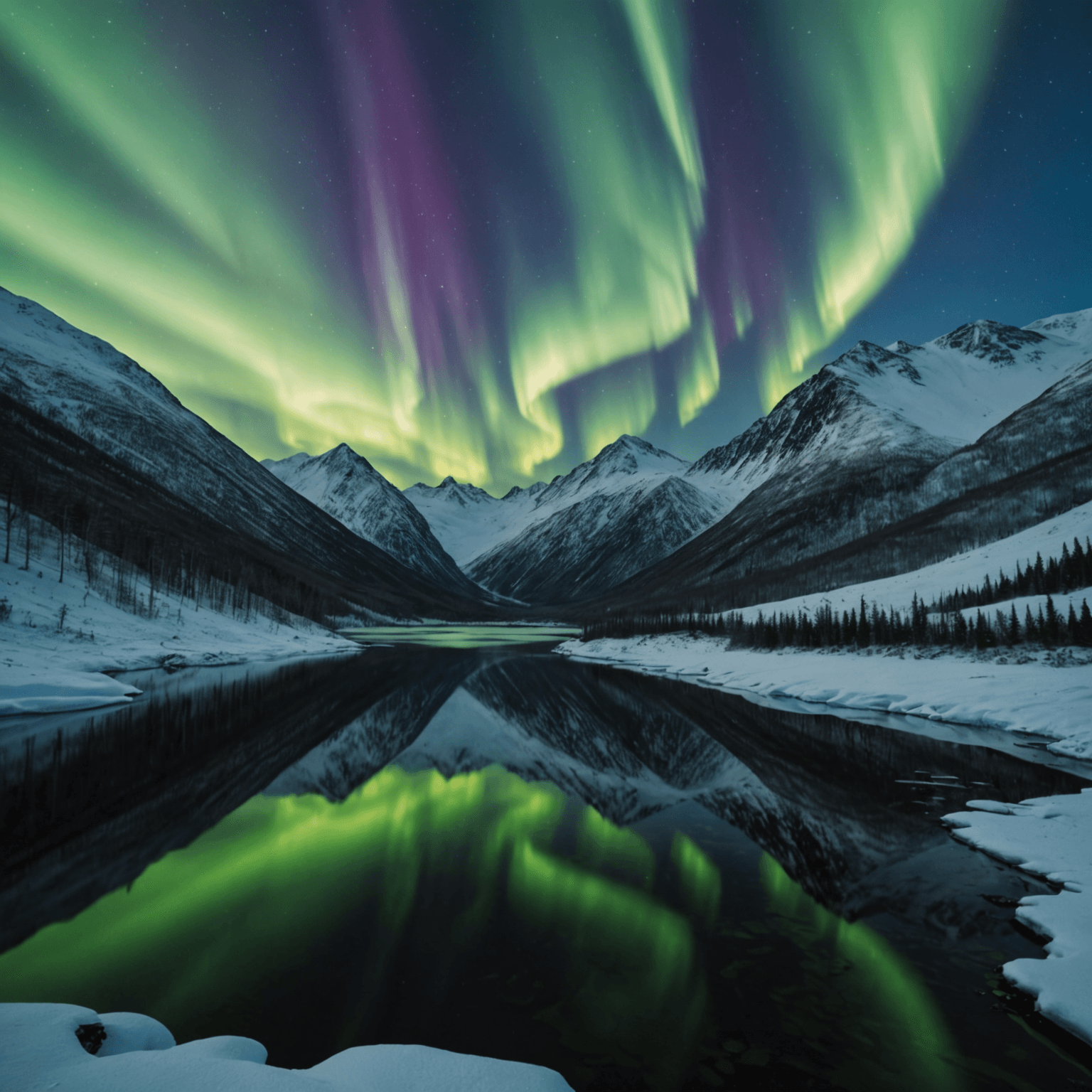Introduction
Alaska, the Last Frontier, is a land of unparalleled beauty and diverse landscapes that captivate travelers from around the globe. With its majestic mountains, pristine glaciers, and sprawling wilderness, Alaska scenery offers an extraordinary experience for nature lovers and adventure seekers alike. This guide provides a comprehensive look at some of the most stunning natural wonders Alaska has to offer, from the towering peaks of Denali to the serene coastal fjords and untamed backcountry landscapes.
Denali National Park: The Crown Jewel
Denali National Park is often at the top of travelers’ lists when exploring Alaska scenery. Home to North America’s tallest peak, Denali (formerly known as Mount McKinley), the park spans over six million acres of breathtaking wilderness. The mountain itself, soaring at 20,310 feet, provides a dramatic backdrop for an array of wildlife, including grizzly bears, wolves, and caribou. Visitors can enjoy a variety of activities, from hiking and wildlife viewing to guided tours and photography safaris.
For those interested in an exhilarating adventure, consider exploring the park through dog sledding and helicopter tours, which offer a unique perspective of this natural wonder.

Coastal Fjords and Glacial Wonders
Alaska’s coastal fjords are a testament to the power of glaciers in shaping the landscape. Kenai Fjords National Park, located near Seward, is a stunning example. The park’s Harding Icefield feeds nearly 40 glaciers, creating a spectacular sight of icy rivers and rugged coastlines. Visitors can embark on boat tours to witness the majestic tidewater glaciers calving into the sea, a dramatic display of nature’s raw power.
Check out all glacier activities to enhance your experience and understand the intricate beauty of these icy formations. For more information about planning your visit, Travel Alaska offers detailed guides and tips.
The Wild Backcountry: Wrangell-St. Elias and Beyond
For those seeking solitude and unspoiled wilderness, Wrangell-St. Elias National Park & Preserve is a must-see. As the largest national park in the United States, it encompasses over 13 million acres of diverse landscapes, from towering mountains to expansive valleys. The park is home to nine of the 16 highest peaks in the U.S., including Mount St. Elias, which towers at 18,008 feet.
Adventurers can explore the park through a variety of activities, such as hiking, backpacking, and even snowmobile tours. The National Park Service provides valuable resources for planning your journey into this remote wilderness.

The Aurora Borealis: Nature’s Light Show
No guide to Alaska scenery would be complete without mentioning the mesmerizing aurora borealis, or Northern Lights. This natural phenomenon is best viewed during the winter months, when the nights are longest and darkest. Alaska offers some of the best opportunities to witness this dazzling display of colorful lights dancing across the sky.
For the ultimate Northern Lights experience, consider embarking on a Northern Lights tour that combines the thrill of snowmobiling with the awe of the aurora.
To check aurora forecasts, the Geophysical Institute provides up-to-date information on viewing conditions.
Conclusion
Alaska’s scenery is a testament to the awe-inspiring power and beauty of nature. From the majestic peaks of Denali to the serene fjords and untouched wilderness, each corner of this vast state offers a unique and unforgettable experience. Whether you’re a seasoned adventurer or a first-time visitor, Alaska’s landscapes promise to leave you breathless and longing for more.
For more inspiration and travel tips, visit Snowhook Adventures’ blog to discover how you can make the most of your Alaskan journey.
FAQ
What is the best time of year to visit Alaska for scenery?
The best time to visit Alaska for scenery is during the summer months, from June to August, when the weather is mild, and the days are long. This is also the best time to explore national parks and enjoy outdoor activities.
Can you see the Northern Lights year-round in Alaska?
The Northern Lights are best viewed during the winter months, from September to April, when the nights are longest and darkest. Viewing is possible year-round, but summer daylight hours make sightings rare.
What wildlife can I expect to see in Denali National Park?
Denali National Park is home to a diverse array of wildlife, including grizzly bears, wolves, caribou, Dall sheep, and moose. Birdwatchers can also spot golden eagles and gyrfalcons among other species.
Are there guided tours available in Alaska’s national parks?
Yes, guided tours are available in many of Alaska’s national parks. These tours can provide valuable insights into the local ecology and geology, as well as offer safe and exciting ways to explore the parks.
What safety precautions should I take when exploring Alaska’s wilderness?
When exploring Alaska’s wilderness, it’s essential to be prepared for unpredictable weather and wildlife encounters. Always check the local weather forecast and carry bear spray if hiking in bear country. It’s also advisable to inform someone of your plans and expected return.
How do I get to Kenai Fjords National Park?
Kenai Fjords National Park is accessible by road from Anchorage to Seward. From there, visitors can take boat tours or explore the park’s trails. The National Park Service provides detailed information on access and activities.
Are there any cultural or historical sites to explore in Alaska?
Yes, Alaska is rich in cultural and historical sites, including Native Alaskan heritage centers, historic gold rush towns, and museums. Visiting these sites can provide a deeper understanding of Alaska’s diverse history and culture.
What should I pack for an Alaskan adventure?
Packing for Alaska requires preparation for a range of weather conditions. Essential items include layered clothing, waterproof jackets, sturdy hiking boots, and binoculars for wildlife viewing. Don’t forget a camera to capture the stunning Alaska scenery!


